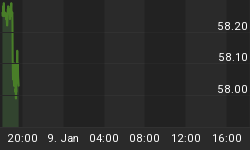In this Observation, we examine the historical record of the Dow Jones Industrial Average (DJIA) in the calendar year following an election. We begin with a statistical table of all post election calendar years since 1889.

The following table breaks down the same statistics by political party.

We have constructed the following weekly composite charts of the DJIA for all 29 presidencies, 13 Democratic presidencies and 16 Republican presidencies. While composite charts are interesting, we would caution that they are drawn from a limited number of observations and are averages of that limited data set.



Discussion Points
- The DJIA has risen 15 times and fallen 14 times in the 29 post election calendar years since 1889.
- The overall, average gain for the 29 post election calendar years is 4.98%, with the 16 Republican presidencies averaging gains of 5.48% and the 13 Democratic presidencies averaging gains of 4.36%.
- Franklin Roosevelt wins the prize for both the best post election year (1933, up 66.69%) and worst post election year (1937, down 32.82%).
- The five post election calendar years ending in 5 (1905, 1925, 1945, 1965 and 1985) were all positive years. Each followed the re-election of a sitting president (Theodore Roosevelt in 1905, up 38.20%, Calvin Coolidge in 1925, up 30.00%, Franklin Roosevelt in 1945, up 26.65%, Lyndon Johnson in 1965, up 10.88% and Ronald Reagan in 1985, up 27.66%).















